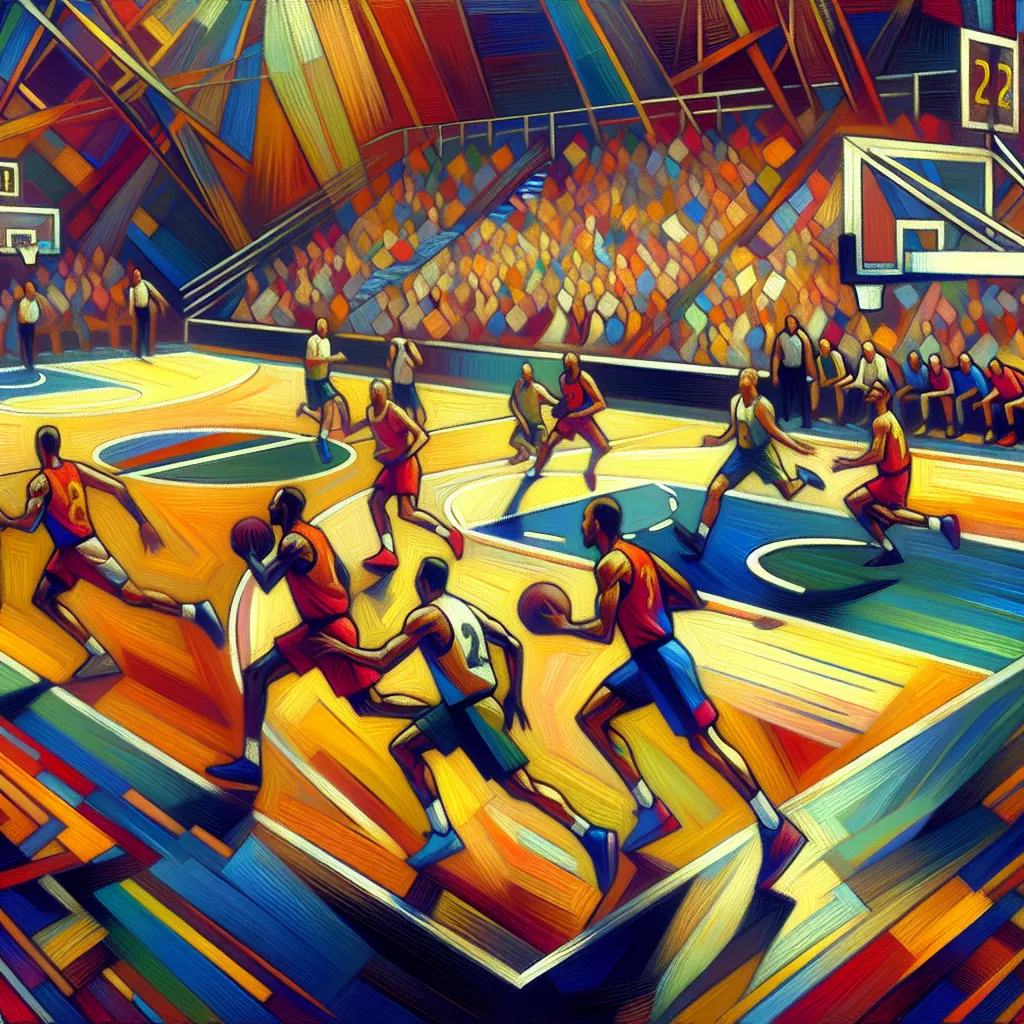
- Published on
- Authors

- Name
- Sports Tips
Court Vision: Seeing the Entire Floor
Basketball is often compared to a game of chess on hardwood. The most successful players are those who can see beyond their immediate surroundings and anticipate the next move, much like a chess master. This ability, known as court vision, allows players to read defenses, anticipate plays, and make accurate passes. Here's a deep dive into the techniques that can turn you from a good player into a floor general.
Understanding Court Vision
What is Court Vision?
Court vision is the ability to survey the entire court, understand the flow of the game, and make decisions based on the movement of all players, not just the ball.
Components of Court Vision
- Spatial Awareness: Knowing where you are on the court.
- Peripheral Vision: Seeing beyond the direct line of sight.
- Game Anticipation: Predicting where players will be.
- Decisiveness: Making quick, accurate decisions.
Techniques to Improve Court Vision
Reading Defenses
Identifying Defensive Setups:
- Man-to-Man: Players are matched up directly.
- Zone Defense: Areas of the court are covered rather than individuals.
Scanning the Defense:
- Use short, quick glances to survey the defense.
- Pay attention to body positioning and tendencies.
Recognizing Traps and Double Teams:
- Anticipate when and where traps are likely to be set.
- Be ready to pass out of a double team quickly.
Anticipating Plays
Studying Opponents:
- Watch game footage to understand opponent tendencies.
- Learn their playbook and common schemes.
Reading the Floor:
- Observe the spacing of players.
- Notice the movement patterns, both offensive and defensive.
Communicating:
- Use verbal and non-verbal cues with teammates.
- Make sure everyone is on the same page.
Making Accurate Passes
- Types of Passes:
- Chest Pass: Quick, for short distances.
- Bounce Pass: Effective to avoid defenders' hands.
- Overhead Pass: For long distances or over tall defenders.
- No-Look Pass: Keeps defenders guessing.

Timing and Precision:
- Pass at the right moment to avoid interception.
- Ensure the pass is easy for the receiver to handle.
Practice Drills:
- Two-Ball Passing: Work on passing accuracy and receiving.
- Moving Target Drill: Practice passing to moving teammates.
- Vision Cone Drill: Use cones to simulate defenders, improving peripheral vision.
Tips from the Pro
From the Player’s Perspective
- LeBron James: "Always know where your teammates are. The game slows down when you start seeing the floor and not just the ball."
- Magic Johnson: "Court vision is developed through hard work. Study the game, watch films, and learn every position’s responsibilities."
From the Coach’s Bench
- Phil Jackson: "Encourage players to communicate constantly. It helps in understanding the dynamics of both offense and defense."
- Gregg Popovich: "Drills that simulate high-pressure situations are key. Players need to practice as they would play in a game."
Conclusion
Improving court vision is not an overnight process; it requires dedication, practice, and a deep understanding of the game. Both players and coaches can benefit from focusing on these key areas. For players, it’s about developing that sixth sense on the court. For coaches, it’s about creating an environment where players can hone these skills effectively.
Remember: Great players don't just play the game; they see the game.
Make court vision a priority, and you'll see the differences not just in your game but in your overall basketball IQ.
| Technique | Description | Example Drills |
|---|---|---|
| Reading Defenses | Identifying and reacting to defensive setups | Scanning Drills, Film Study |
| Anticipating Plays | Predicting and understanding movements | Moving Target, Vision Cone Drill |
| Making Passes | Ensuring pass accuracy and timing | Two-Ball Passing, Live Scrimmages |
Happy balling! 🍀
